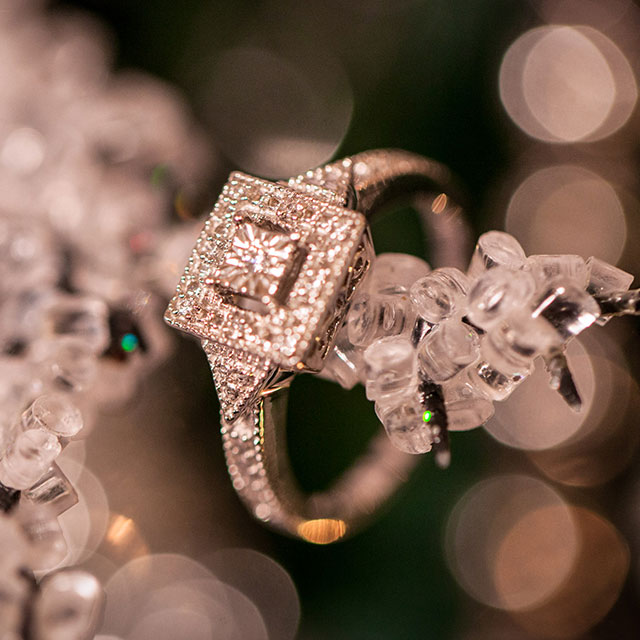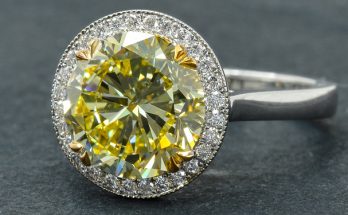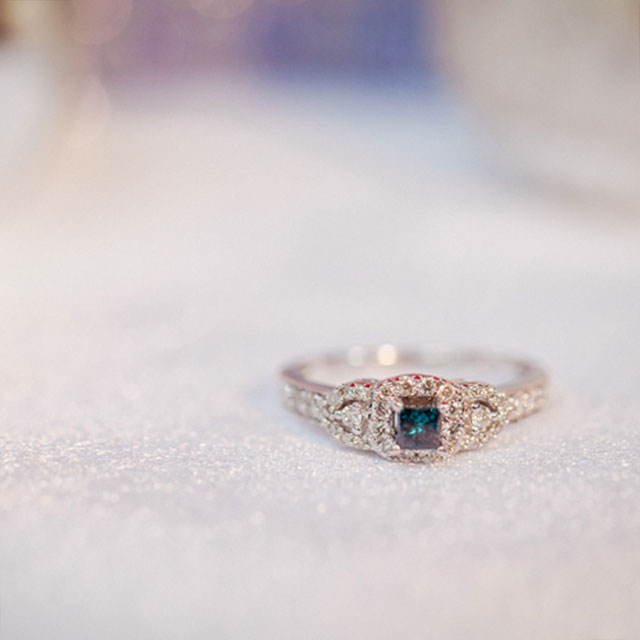The two terms can be confusing at first — but they’re not the same. The cut of a diamond is the most important part of the equation when it comes to an engagement ring’s stunning shine.
A diamond has to be cut to create its shape. But what’s referred to as the diamond’s cut isn’t the same as its shape.
Confused yet? Just remember that shape and cut are different, but they work together to create the overall impact of the diamond you choose for an engagement ring.
The diamond’s cut, one of the 4Cs, is one way of grading a diamond. It’s all about math and science and geometry — how a diamond cutter cuts facets and angles on a diamond to let the light shine through it. You may be bored by this concept, or you might be fascinated by it. Regardless, it has a big impact on the beauty of your diamond.
The diamond shape, on the other hand, is usually the first thing most people think about when choosing a diamond engagement ring.
The shape of things to come
Diamond shapes are easy to understand. They contribute to the ring’s overall style. For most soon-to-be engaged couples, the diamond shape is the first decision to make when looking at diamond engagement rings.
Most people choose either a round (known as a round brilliant) or square diamond (known as a princess cut) for the engagement ring. Generally speaking, the round diamond is more traditional, while the princess cut is a more modern shape for diamond engagement rings.
Other options are known as fancy shapes, and include diamond shapes like pear, marquise, cushion and heart. Depending on how these shapes are cut, all of them boast the dazzling sparkle you’re seeking for your engagement ring.
Cut to the chase
So maybe you’ve picked a diamond shape and you think you’re done. But more than anything else, the cut determines the diamond’s overall beauty and dazzle in three really important ways: proportion, symmetry and polish.
How these three factors interact with and against each other affects the way light moves within the diamond. It’s like the sun hitting a mirror and reflecting onto another wall, except there are numerous little reflective surfaces and facets bouncing the light all over the inside of the diamond.
In a well-cut diamond, light enters through the top, or table, and reflects off the angles between the flat places (the facets) on the sides (known as the crown and the pavilion) and exits back out the top.
All that light bouncing around within the diamond creates three more things you might read about or hear in a jewelry store:
Brilliance
The brightness created by a combination of the white light reflections on and in the diamond.
Fire
The flashes of color you see within the diamond.
Scintillation
The sparkle that happens when a diamond or a light source moves.
Taken altogether, these are the reasons a beautiful diamond catches your eyes and why it seems to glow from within. That dazzle is created by the light reflecting and refracting off the angles and the flat surfaces between (the facets).
In a badly cut diamond, the light goes in the top, leaks out through the sides and ends up looking dull. It may even be a bigger diamond by weight (and thus be more expensive), because not enough of the material was cut away to give you the sparkle everyone looks for — and marvels at — in a diamond.
A square or slightly rectangular cut — which you might hear referred to as a princess-cut diamond — is the next most popular choice for an engagement ring. This is known as a mixed cut or a modified brilliant cut, and can also have the fire and sparkle of its round brilliant cousin.
Fancy shapes can also be cut to enhance a stone’s sparkle and dazzle, including the pear, marquise, cushion and heart.
So there you have it. Pick a shape you love, and then look at several diamonds to see how the light plays within them. Don’t get too caught up with the carat size (its weight) even though that’s often the first question other people will ask. The cut is what determines how dazzling your diamond engagement ring will be, forever.



